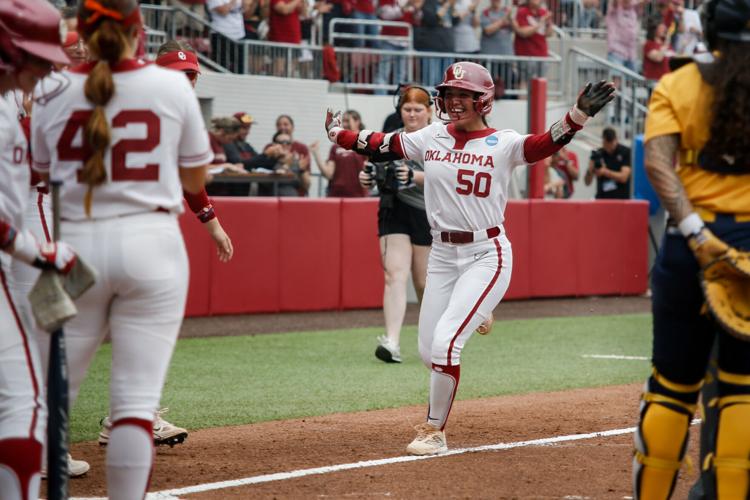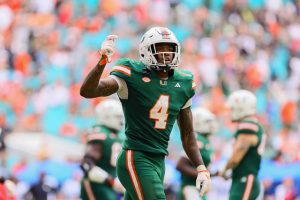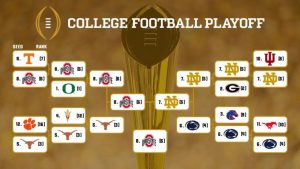
The last time the Oklahoma Sooners took the field against the Alabama Crimson Tide, the difference between the two programs was clear. Alabama’s suffocating defense, relentless offensive pace, and polished execution overwhelmed the Sooners in a way that underscored the gap between a perennial powerhouse and a team still trying to rediscover its identity. For Oklahoma, that meeting was humbling, exposing not only their inexperience but also the structural challenges they needed to address in order to compete at the highest level of college football.
But since that sobering encounter, something has changed in Norman.
Call it growth. Call it maturity. Call it a program reclaiming its edge. Whatever it is, the Sooners are no longer the wide-eyed group that stepped onto the field last time against the Crimson Tide. They’ve evolved. And while they haven’t solved every riddle, they’ve begun to write answers in bold, physical ink — on the ground, in the trenches, and in the locker room.
The first shift began with accountability. Coaches and players alike point to the weeks following that loss to Alabama as a turning point in the team’s collective mentality. Instead of sulking or making excuses, the Sooners got back to work — harder, smarter, and more focused. Strength and conditioning sessions were ramped up. Practices took on a sharper edge. Film study became more intense. The team’s leadership core — still young, but no longer raw — began to set the tone.
Quarterback development has been central to Oklahoma’s rise. In the last meeting with Alabama, the Sooners’ offensive rhythm was erratic at best. Their signal-caller struggled to find consistency against a Crimson Tide defense that forced hurried throws and eliminated deep threats. Since then, however, the quarterback room in Norman has undergone a quiet revolution. A combination of coaching adjustments, better protection up front, and a renewed focus on timing has unlocked new levels of efficiency in the passing game.
The Sooners’ starter now commands the offense with a poise that simply didn’t exist a year ago. He’s more decisive, more accurate, and — perhaps most importantly — more trusted by his teammates. Mistakes that used to spiral into momentum-killing drives are now treated as blips. The offense resets and attacks again. That mental fortitude wasn’t there before. It is now.
Oklahoma’s offensive line, once the Achilles’ heel of the program, has made massive strides. Against Alabama, they were physically dominated. But in the months since, they’ve become a group defined by cohesion and resilience. Anchored by veterans who’ve taken younger linemen under their wing, the unit now thrives on communication and tenacity. Their ability to protect the quarterback and establish a running game has allowed the entire offense to operate with more balance and confidence.
And then there’s the defense. If there was one glaring weakness the Crimson Tide exploited relentlessly, it was the Sooners’ inability to make timely stops. Missed tackles, blown assignments, and a lack of pressure up front painted a grim picture. But Oklahoma’s defensive unit has undergone a transformation not just in scheme, but in swagger.
The arrival of key transfers, combined with the development of homegrown talent, has given the Sooners a new defensive identity. They play faster, tackle cleaner, and execute with a level of discipline that was lacking before. Players who once struggled with positioning and reads now fly to the ball with purpose. Coaches have streamlined responsibilities and emphasized fundamentals. The result? A defense that bends less, breaks rarely, and thrives on third down.
More than personnel and schemes, though, what stands out most about Oklahoma’s growth is their emotional maturity. In high-pressure moments, they no longer flinch. Whether it’s closing out a close game or responding to an early deficit, the Sooners show a steadiness that reflects both preparation and belief. This team trusts itself — and that trust is contagious.
There’s also a cultural component to the growth story. Inside the locker room, there’s been a renewed emphasis on accountability and unity. Veteran leaders hold their teammates to a higher standard. Younger players are no longer just watching — they’re contributing. Practices are louder, faster, more physical. The bar has been raised across the board.
Much of that cultural shift can be traced to head coach Brent Venables, whose fingerprints are all over the team’s transformation. Venables has been relentless in his pursuit of toughness, not just physically but mentally. He’s challenged players to embrace discomfort, to respond to adversity, and to take pride in the details. And the players have bought in.
From offseason workouts to game-day execution, there’s a clear sense that Oklahoma is no longer just trying to catch up — they’re trying to lead. The swagger that once defined the program during its glory years is beginning to return, not in a brash or arrogant way, but in a quiet confidence forged by hard-earned experience.
It’s also worth noting how the Sooners have handled setbacks this season. In past years, a tough loss might have derailed momentum. But this group is different. They bounce back. They self-correct. They don’t dwell — they adjust. That ability to respond is a hallmark of great teams, and it’s a quality the Sooners lacked in previous iterations.
In preparation for this rematch with Alabama, Oklahoma hasn’t just looked at film from their last meeting. They’ve studied themselves — their progress, their pitfalls, their patterns. They know where they were soft. They know where they broke down. And they’re determined not to repeat those mistakes.
Alabama remains one of the gold standards in college football, and there’s no pretending the challenge will be easy. The Crimson Tide still boast elite talent at nearly every position, and they’re coached by one of the best minds the game has ever seen. But the Sooners aren’t entering this matchup intimidated. They’re entering it ready.
And that’s the biggest difference.
A year ago, Oklahoma hoped to compete. Now, they expect to. That shift in mindset changes everything — how they prepare, how they execute, and how they carry themselves.
The stakes are high, no doubt. For the Sooners, this game is more than just another chance to prove their progress — it’s a measuring stick, a statement opportunity, and a potential turning point in the narrative surrounding the program. A win would validate months of work and signal that Oklahoma is ready to reclaim its place among the nation’s elite. A close loss, while disappointing, would still reinforce the notion that this team is no longer a step behind — just a step away.
Whatever the outcome, one thing is clear: this is not the same Oklahoma team Alabama last faced.
They’ve been hardened by experience, sharpened by adversity, and empowered by belief. From learning to leading, the Sooners have grown — and now, they’re ready to show just how far they’ve come.





